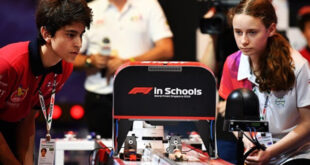Over the years, Frontier has made creature animation a speciality. As far back as V2000, for the first PlayStation, Frontier was working with inverse kinematics systems to animate the game’s arachnid enemies around the environments.
Elements of that system found their way into the creatures from A Dog’s Life for PS2, and those learnings took us forward to Kinectimals, Zoo Tycoon and our most recent release, Jurassic World Evolution.
There are a great many layers coming together to form the final lifelike motion of Jurassic World Evolution’s dinosaurs. Dinosaurs of different sizes, weights and shapes needed to navigate player-authored environments convincingly, while also fighting one another, hunting, sleeping, eating and generally feeling alive.

As a member of the animation code team my role was to co-design and implement the systems to achieve these goals with strong collaboration from animators and technical artists. We work with Frontier’s in-house Cobra game engine which gives us the freedom to create unique technologies you wouldn’t typically find in an off-the-shelf game engine. In this piece I’ll talk about the major systems we developed, and delve a little into the experience of working as an animation programmer at Frontier.
Each dinosaur has a large range of bespoke hand-keyed animations from our talented animation team. These include sets designed for the first fundamental game system – a locomotion system that blends animation to achieve the dynamic range of speed and curvature you find in game. This system is fed a stream of points from navigation code running a full flow simulation which it then converts into smooth paths fed by choices of animation that take dinosaurs from A to B – a topic our navigation and locomotion programmers could easily write a separate article about.
We layer partial and additive animations on top and out of phase with locomotion to reduce repetition and add flavour. Subtle claw twitches, head shakes, small sniffs or a full roar make the creatures come to life. The dinosaurs focus on their targets with a headlook system that procedurally twists bones up the neck to point the head in the right direction, using the physics engine to provide weight to the motion and lead with the head.
My particular challenge was related to Jurassic World Evolution’s terraforming. The challenge was to allow dinosaurs to convincingly move across player-authored terrain, planting their feet correctly no matter how rugged players choose to make it.
We created a procedural foot-planting system with inverse kinematics. The feet are lifted in arcs to avoid ground intersection and arrive aligned to the ground with legs carefully shaped by constraints tuned by our rigging team. As each foot takes a turn in contact with the ground, the rotation and height of the body follows emphasising the weight supported at any given time. Quadrupeds have their own mode of motion, aligning their bodies so that each leg isn’t over-compressed or extended, with longer necked dinosaurs keeping their heads held upright and level with the horizon. Bipeds can pitch up and down into slopes with less emphasis on roll.
Some dinosaurs can walk on all fours then stand up to sprint so the system was expanded to blend between movement types. Terrain can be raised and lowered directly beneath a dinosaur and the creatures adapt immediately. This was one of the most dramatic outcomes of designing a relatively stateless system, meaning on any given frame the final pose of the dinosaur could be calculated.
Finally you’ll notice there are ragdoll physics in effect on long tails as they drag along the ground or when dinosaurs are airlifted or tranquillised. Animation-driven ragdoll rigs were tuned to keep dinosaurs’ iconic shapes, stiffening some joints and loosening others. This had to blend seamlessly with the other system layers, a challenge solved through customisable states and transitions within our own motion graph. Putting these pieces together took the focused effort of a whole team.
Fortunately we have a fantastic team of animators here at Frontier, with graduates sitting side-by-side with veterans from the PlayStation 2 era.
Everyone works closely and comments with good feedback. As coders, we stand on the shoulders of giants with a long legacy of expertise and experience from our previous games. Animation programming at Frontier often drifts towards the more artistic side of game development, as doing a good job is as much about visuals and emotion as it is about correctness and precision.

 MCV/DEVELOP News, events, research and jobs from the games industry
MCV/DEVELOP News, events, research and jobs from the games industry




